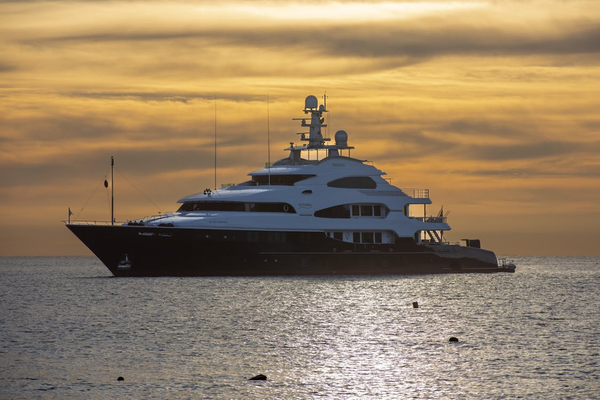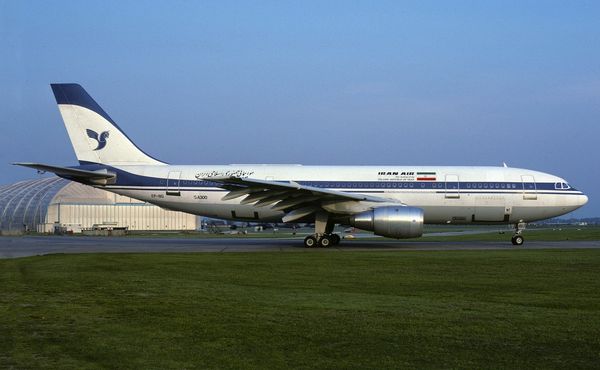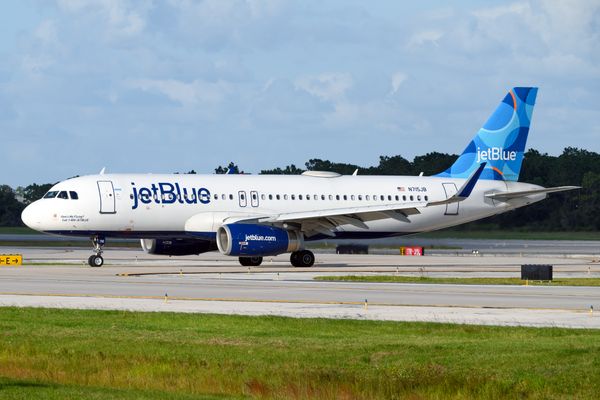It has been 55 years since the Anglo-French supersonic airliner Concorde first flew in 1969. In 1970, a model of the never-completed U.S. SST airliner in Trans World Airlines colors can be seen lurking in the background of the airport manager's office in the original Airport motion picture. Just two years earlier, Stanley Kubrick's iconic film 2001: A Space Odyssey took us into the cabin of a Pan American Airlines spaceplane headed for a hotel in high earth orbit.
Yet, here we are today, a full quarter of the way into the 21st century, with no such service in sight. There is no orbiting hotel, much less regularly scheduled passenger service into space. After 27 years of service, the Concordes, prohibitively expensive to operate, were grounded in 2003 by the only two airlines ever to have owned them, a move accelerated by the first and only fatal Concorde crash in 2000.

Large jumbo jets have plied the skies instead, offering long-range, heavy-lift capabilities featuring luxurious amenities and comfort, albeit at speeds around 85% of the speed of sound, less than half what the Concorde was capable of.
Enter Boom Supersonic of Denver, CO. If they are successful, Boom will return supersonic air travel to the skies. The Boom Overture is their instrument of choice, a supersonic transport meant to carry 64-80 passengers at 1.7 times the speed of sound. Overture will be powered by four single-stage, 72-inch, air-cooled turbine engines called Symphony. Each engine will produce 35,000 pounds (15,876 kilograms) of thrust. The engine's maker, Florida Turbine Technologies (FTT), predicts the Symphony will boast a 25% improvement in time on the wing, resulting in a 10% reduction in total operating costs compared to derivative engine approaches.
A two-pilot crew will fly the Overture. The first flight is planned for 2026, with introduction into service expected in 2029. In 2023, Boom announced the construction of a "Superfactory" at Piedmont Triad Airport (GSO) in Greensboro, NC, which will serve as the final assembly line for Overture test flights and customer delivery. Completion of the facility is anticipated in the second quarter of 2024, ahead of schedule.
Airline Interest
Multiple airlines have committed to the Boom Overture. Japan Air Lines (JAL) was the first airline to leap, making a $10 million investment in Boom in 2017. The Boom Overture would reduce the Tokyo to San Francisco flight time to just six hours, cutting three and a half hours off current flights on a Boeing 777-300.
United Airlines was the first U.S. airline to sign an agreement in June of 2021 to purchase the Boom Overture, committing to 15 examples with an option for 35 more. In August 2022, American Airlines and Boom Supersonic announced the airline's agreement to purchase up to 20 aircraft, with an option for an additional 40. American paid a non-refundable deposit for the initial 20 aircraft. Overture's order book currently stands at 130 orders and pre-orders.
.jpg)
Sustainability
Boom is committed to net zero carbon by 2025 and greenhouse gas emissions by 2040. The company has set goals for emissions reductions in all stages of Overture's design, construction, and flight, including using renewable energy-powered manufacturing and optimizing Overture and its Symphony engines to utilize 100% sustainable aviation fuel (SAF).
Boom first discussed designing the engines for Overture with Rolls Royce. When Rolls Royce declined to proceed with the project, Boom and FTT announced the Symphony engine on December 13, 2022. The FTT engine design team has its roots in the supersonic engines that power the F-22 and F-35 fighter planes. FTT leads the engine design and assembly of the initial Symphony production units for ground, flight, and certification tests. G.E. Additive provides additive manufacturing design consulting and technology to the Symphony engine.
Other partners and suppliers in the construction of the Overture include Aernnova of Spain for wing design, Leonardo (Italy) for the fuselage, and Aciturri (Spain) for the tail. Honeywell will provide the avionics, and Latecoere of France will provide the electrical wiring system, including 64 miles (103 kilometers) of wiring in each aircraft, comparable to a Boeing 787. Safran Landing Systems of Kentucky, USA, a division of Safran of France, will provide the landing gear. Their Walton, Kentucky, facilities are currently undergoing a $65 million expansion. Standard Arrow Has been contracted for maintenance.
Design Changes
The original design of the Overture was fairly reminiscent of the Concorde, with a severely swept, triangular delta wing and no horizontal stabilizers. The Overture was originally to be powered by three engines, one each in housings faired into the undersides of the wings and the third engine mounted in the tail. Bifurcated air intakes on each fuselage side provided air to the third engine.
This version predicted a slightly faster cruising speed than the Concorde, with 40% more efficiency. But after a redesign in 2022, Boom opted for a four-engine configuration, two under each wing in separate nacelles, slightly reminiscent of the B-58 Hustler, a long-range supersonic bomber designed by Convair in the 1950s. Ironically, the B-58 was also originally conceived as a trijet with an engine in the tail, which in later design iterations was removed; finally, four engines replaced the two under the wings.
The newer Overture design also added horizontal stabilizers to the airplane's tail. The cruising speed is now predicted to be Mach 1.7, down from the anticipated Mach 2.1 of the original design.
.jpg)
XB-1 Supersonic Demonstrator Program
As a proof of concept, Boom has created the XB-1 supersonic demonstrator. The XB-1 was first rolled out on October 7, 2020, with an expected first flight in 2021. But continual design improvements pushed back that first flight. In August 2023, it received its FAA Experimental R&D airworthiness certificate.
The XB-1 is approximately one-third the size of the Overture. Although the Overture was redesigned for four engines in 2022, the XB-1 retains its trijet configuration, with all three engines at the rear of the fuselage. J85-15 engines power it, not the yet-to-be-completed Symphony engines that will power the Overture.
The XB-1 has completed several integrated tests recently, including ground vibration mode testing, fuel system integrated testing, and engine operability testing. Following its Flight Readiness Review (FRR), taxi testing in December reached 94 knots (108 miles or 174 kilometers per hour) speeds. The first flight is expected later this year at the Mojave Air & Space Port.
What About the "Boom" in Boom's Plans?
One obstacle in providing supersonic commercial flight stems from a specific aspect of the science of breaking the sound barrier, the phenomenon commonly known as the "sonic boom." Sound travels at 761 miles per hour (1,225 kilometers per hour) at sea level and decreases as altitude increases (at 40,000 feet (12,192 meters), roughly 659 miles per hour (1,061 kilometers per hour)). An aircraft that exceeds the speed of sound creates a shock wave that can be felt and heard over long distances. It can rattle physical objects and startle those who listen to it.
It is a common error to believe that the sonic boom is heard only once over a wide area. The shock wave travels with the object that created it; thus, the sonic boom occurs over and over along the path of the shock wave. This caused governments to prohibit supersonic flight over most land masses and populated areas. Such regulations limited the Concorde to overwater operations. While the Overture is estimated to create less of a sonic boom, it does not eliminate it completely.
.png)
NASA X-59 "Quiet Supersonic" Experiments
NASA unveiled its X-59 "Quiet Supersonic" experimental aircraft two months ago. Designed by Lockheed Martin's famed Skunk Works, the X-59 was built to explore the possibility of a softer sonic boom. It, too, is currently undergoing the same types of systems tests as the Overture.
NASA is constructing a ground-based recording network to measure the effects of the shock wave created by the X-59. NASA anticipates the X-59 will make an audible boom no louder than 75 perceived decibels, a noise that is the thump of a car door being shut.
In comparison, the Concorde made a sound louder than 100 perceived decibels, and 50 perceived decibels is the sound of running a refrigerator in the room (the perceived loudness of sound to the human ear doubles with every ten decibels).
Over Water Routes Strategy
Boom's solution to this problem is to emphasize the profitability of current overwater routes. The company estimates there are more than 600 profitable routes the Overture can fly without running afoul of overland restrictions. The Boom website includes maps of such routes, including potential routes such as Washington DC to Dublin, Atlanta to Madrid, Vancouver to Tokyo, or Los Angeles to Tahiti. Most of these flight times are estimated to be up to 45% less on the Overture.
.jpg)
But Is There Real Demand?
An Expedia survey in 2023 showed that London, Rome, and Paris are among the top five international flight searches, with trending country destinations including New Zealand and Vietnam. Japan was one of the fastest-growing international destinations for U.S. travelers last year.
Boom cites results from their study of 1,500 passengers who had flown internationally at least twice a year recently, including 500 "global premium" passengers who regularly book First or Business Class seats. The results showed that 97% of global premium passengers are interested in flying on a supersonic airplane for long-haul international trips, up from 81% in 2021.
92% of global premium passengers believe that supersonic air travel will be commercially available in the next 10 years (vs. 74% in 2021), and 87% of global premium passengers are interested in switching from their preferred airline to gain access to supersonic travel.
Should developments in quiet boom technology be integrated into later supersonic commercial transport, the domestic market might become available. A 45% reduction in the flight time between Los Angeles and New York would cut the five-and-a-half-hour flight to just three hours.
.jpg)
Investment
On November 9, 2023, Boom confirmed the closing of an investment round, including an October 2023 commitment from the NEOM Investment Fund (NIF). NIF is the strategic investment arm of NEOM, a sustainable regional development in northwest Saudi Arabia. NOEM focuses on next-generation industries and "moonshot" tech investments that they hope will "accelerate the global transformational changes critical to a sustainable future," according to the firm's website.
NIF hopes its collaboration with Boom will provide opportunities to make the Gulf region dramatically more accessible through supersonic flight. Boom's total funding to date now exceeds $700 million.
When the Wright Brothers first flew in 1903, they believed their invention would shrink the world, making connection and understanding among people commonplace. Fifty years ago, future-minded air travelers hoped SSTs would accelerate that mission exponentially.
Aviation has certainly progressed greatly in the last half a century. The gross weight of the largest airliners now exceeds 1 million pounds. GPS navigation has made more of the world accessible to all aircraft types. Flying by airline is now the safest mode of transportation of any kind. But at Mach .80-.85, the speed of airline travel is less than half the Mach 2.0 that the Concorde promised in 1969.
Suppose Boom Supersonic successfully develops the Overture at a cost that allows the airlines to invest and provide reasonably-priced airfares for today's travel industry economics. In that case, they will have successfully brought supersonic flight back to the future. A smaller, closer world awaits.
My Unexpectedly Cheap Last-Minute Getaway with JetBlue Airlines » Air Premia Confirms Washington D.C. as Next American Destination » Essential Legal Tips for Tourists Chartering a Yacht in Dubai »
Comments (0)
Add Your Comment
SHARE
TAGS
INFORMATIONAL Boom Supersonic Supersonic Overture Symphony XB-1 X-59 NASA Skunk Works United Airlines American Airlines Japan Air Lines Sonic Boom Shockwave FTT Mach Honeywell Aernnova Leonardo GE AdditivesRECENTLY PUBLISHED
 Essential Legal Tips for Tourists Chartering a Yacht in Dubai
Discover how yacht rentals in Dubai are regulated and learn what every tourist should know about contracts, insurance, and taxes before setting sail.
TRIP REPORTS
READ MORE »
Essential Legal Tips for Tourists Chartering a Yacht in Dubai
Discover how yacht rentals in Dubai are regulated and learn what every tourist should know about contracts, insurance, and taxes before setting sail.
TRIP REPORTS
READ MORE »
 Mixed Signals: The Tragic Story of Iran Air Flight 655
What would have otherwise been a routine passenger flight across the Strait of Hormuz culminated in a heartbreaking tragedy, all because of a costly system misunderstanding by an external party. This is the tragic story of Iran Air Flight 655.
STORIES
READ MORE »
Mixed Signals: The Tragic Story of Iran Air Flight 655
What would have otherwise been a routine passenger flight across the Strait of Hormuz culminated in a heartbreaking tragedy, all because of a costly system misunderstanding by an external party. This is the tragic story of Iran Air Flight 655.
STORIES
READ MORE »
 My Unexpectedly Cheap Last-Minute Getaway with JetBlue Airlines
My name is Daniel Moreno. I live in Tampa, Florida, and I work as a logistics coordinator at a small distribution company. I had to book a JetBlue Airlines flight at the last minute. I was sure the price would be high because that’s usually what happens with late bookings within the United States. But the final cost surprised me — the ticket was much cheaper than I expected.
TRIP REPORTS
READ MORE »
My Unexpectedly Cheap Last-Minute Getaway with JetBlue Airlines
My name is Daniel Moreno. I live in Tampa, Florida, and I work as a logistics coordinator at a small distribution company. I had to book a JetBlue Airlines flight at the last minute. I was sure the price would be high because that’s usually what happens with late bookings within the United States. But the final cost surprised me — the ticket was much cheaper than I expected.
TRIP REPORTS
READ MORE »



